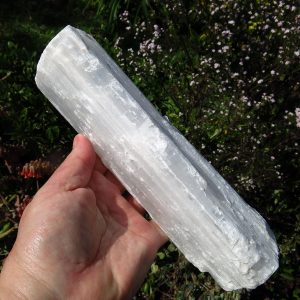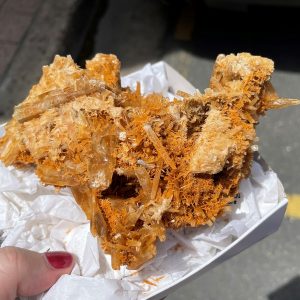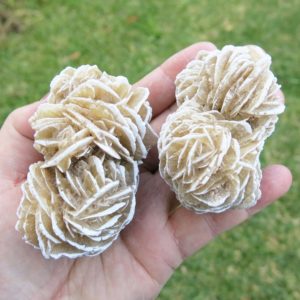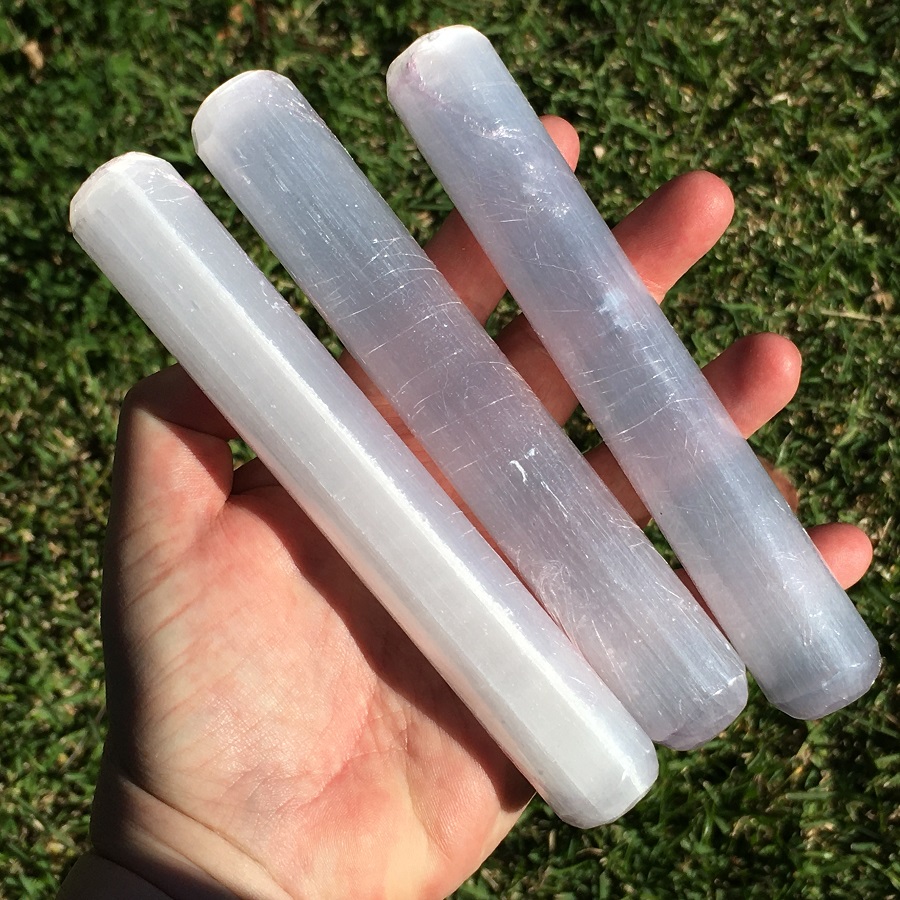Crystal Experiences
My Experiences with Selenite
My intention of the experience pages is to give my real-life interactions with the crystals to take the mystery out and to encourage you to play so you can uncover their healing help for you. Also, some geological highlights I’ve uncovered to help identification.
Geological Insights
Gypsum in whatever form I have it at the market is truly loved by all at the markets! It is forever being picked up, stroked, “shown to mum”, and asked about. Unfortunately, the delicate forms like desert rose are being kept on higher shelves to be a little more from eager hands and the needle form from Mexico or South Australia is not being taken to markets because it doesn’t survive the trip!
I did enjoy one customer advising me that he had been into the Libyan desert and collected gypsum variety desert rose by rooting around in the sand. So, it grows in the dry heat and hence why it dissolves quickly if you leave it in water!
The needle form grows very quickly after rains have dissolved gypsum from the ground into the water as a lake rises from a flood. And then the crystals form on the walls as the sun evaporates the water. This would be an interesting experiment to see if we can grow our own needle crystals!
Most selenite you find on the internet or at crystal shops is actually mislabeled. It really is gypsum variety satin spar. It is thin fibers like optical cable that is all bunched together. But I do notice a lot of it does have the variety selenite also growing on the satin spar. That is, it’s the rather see through crystals that are squarish. I actually have one piece that has a very definitely large lump of the “water” selenite in with the satin spar … sorry I’ve decided to keep this one for “show and tell” at the Joy of Crystals and Rocks courses!
The satin spar variety is much more robust than its cousins. It grows across caves very quickly in 50-degree Celsius heat. It doesn’t dissolve in water (or if it does it takes a mightily long time – and I have not tried hot water). However, when left in water it does loose its sheen – especially disappointing if it’s a polished piece. It is very breakable and if you are not careful handling the natural “rulers” you will get splinters in your hands!
The satin spar is famous as the large crystals seen in the giant caves of Mexico. As it grows in great volumes it is easily available in large pieces. Most of the satin spar in Australia comes from Morocco, Africa.
Because it is so soft, where it is found as large beds (that is its was dissolved in water and just became layers and layers of gypsum in what was once a lake), it is mined to create the plaster products we use in our homes and offices. This includes plaster of Paris for modelling and holding broken bones in place. Ask your parents if you don’t know what plaster is. Learn more from Wikipedia.
Day to Day Experiences
I have not done much with the delicate forms energetically to date, so this discussion is about the gypsum variety satin spar which most stores call “selenite”.
Since Qala first introduced me to selenite (satin spar), it has been a much-loved crystal. Qala told the group she was training that selenite’s fibrous form actually looks like our central pillar (Anthahkarana) that runs through our energy body (light body). And just as optical fibers in optical cables are fantastic at sending light/pulses from one end to the other of a cable, this form also sends energy very quickly through us. It connects us to the “heavens” and to the Earth’s heart (core) more quickly than any other crystal. Because it is like our pillar it helps us hold, work, release energies much more easily than if we were doing it on our own.
My little voice of “really?” was put to rest when many light workers unconnected to Qala gave me their experiences. Tarot readers, angel healers, astrologers, Reiki practitioners, aromatherapy masseurs, told me that it was so much easier for them to ground, connect and bring through the messages and energies (and far less tiring). Recently the Tarot reader at Bondi markets trialed one of my selenite candle holders and she commented she’d had energetically a great day including a good stream of business.
Several pieces always are under my healing table for my clients’ sessions (sometimes huge patterns of 10+ pieces are all doing their thing!).
And I sleep above an 8kg piece under the bed! Getting used to new crystal beside you in bed can take a while though.
I noticed that when I handed selenite to some light workers, they placed it in up/ down position instinctively and remarked how quickly they felt its effects. Another customer building an altar for the first time sent me an email that she had been unable to have the selenite in up down position because it was too strong. She decided to place it instead on her altar in a horizontal position as that was comfortable for her.
An “aha” moment happened when I realized that the strength of the energy felt from satin spar may depend on the angle that the fibers ran at compared to our natural central lights pillar. I sat in my chair tuned into a selenite ruler and definitely noticed that it was stronger aligned to my pillar then when it was at 90°. This was an exciting thing to realize and now I share it with you.
Watching what the crystals have me place them under my healing table it made sense that some pieces are vertical because they are helping the pillars or channels that run in that direction through the chakras and that some are horizontal following the central pillar (most typical direction) and some aligned to other channels out of the chakras.
Recently we obtained selenite in small, medium, and large forms which have been wonderful in providing the “vertical support” for the person on the healing table.
And of course, they look fabulous providing height on altars you have around the house or office (and for a lot less than amethyst geode -cave).
Look at one of the selenite crystals on the website and you can see a tab that gives you the healing properties of this divine crystal.




